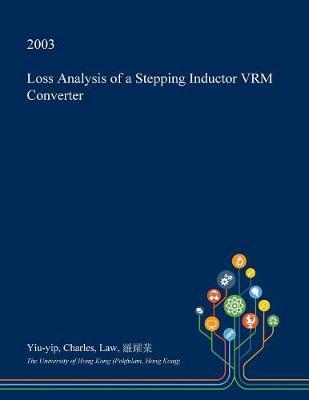Overview
This dissertation, Loss Analysis of a Stepping Inductor VRM Converter by Yiu-yip, Charles, Law, 羅耀業, was obtained from The University of Hong Kong (Pokfulam, Hong Kong) and is being sold pursuant to Creative Commons: Attribution 3.0 Hong Kong License. The content of this dissertation has not been altered in any way. We have altered the formatting in order to facilitate the ease of printing and reading of the dissertation. All rights not granted by the above license are retained by the author. Abstract: Abstract of thesis entitled Loss Analysis of a Stepping Inductor VRM Converter Submitted by Law Yiu Yip Charles for the degree of Master of Philosophy at The University of Hong Kong in August 2003 Advancement in microprocessor technology has created a new challenge for the power supply industry. Years ago microprocessors required a power supply which offered high efficiency and low volume only. However, with the new advanced power management capability built into microprocessors, the power supply must also be able to provide a very fast load transient response. Otherwise the microprocessor may malfunction. The result has been the emergence of the Voltage Regulator Module (VRM), a small dedicated power supply located besides the microprocessor which aims at providing high efficiency and fast transient response. Currently multiphase interleaving is widely used. However it has several drawbacks. It has a high component count, and is therefore expensive. Secondly, in practice the effect of ripple cancellation is ineffective. Thirdly, it is not very efficient. Analysis shows that it has the same steady state semiconductor conduction losses and magnetic losses with a single channel buck converter, but a higher inductor copper loss. Simulation and experimentation have shown that the interleaved converter has a similar transient response with a single channel buck converter, and is therefore not worth using in VRM applications. The stepping inductor converter is a converter that can give a fast transient response. It is simple to build, cheap, and efficient. It is a single phase topology for VRM fast transient application. The advantages of the stepping inductor converter include low additional parts count, compatibility with existing buck controllers, a very good steady state performance, and a fast transient response. However, it is subject to transient loss. In this study the transient loss of a stepping inductor converter is explained in detail. The loss is then modeled and analyzed. An approximation method to estimate the loss introduced by a stepping inductor converter is provided. The approximation method combined with real world CPU input current transient amplitude and frequency data enables the loss of stepping inductor converter in real world VRM application to be calculated. DOI: 10.5353/th_b2947791 Subjects: Voltage regulatorsElectric current convertersMicroprocessors
Full Product Details
Author: Yiu-Yip Charles Law ,
羅耀業
Publisher: Open Dissertation Press
Imprint: Open Dissertation Press
Dimensions:
Width: 21.60cm
, Height: 0.60cm
, Length: 27.90cm
Weight: 0.263kg
ISBN: 9781374711303
ISBN 10: 1374711306
Publication Date: 27 January 2017
Audience:
General/trade
,
General
Format: Paperback
Publisher's Status: Active
Availability: Temporarily unavailable

The supplier advises that this item is temporarily unavailable. It will be ordered for you and placed on backorder. Once it does come back in stock, we will ship it out to you.



